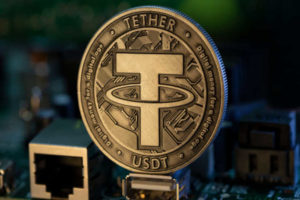
In an extensive article in the Financial Times, Willem Buiter and Anne Sibert explain the benefits and problems with stablecoins, and how to maximize and solve them respectively. They write:
As the world of decentralised finance continues to grow, there is much demand for a digital currency fit for use in blockchain-based applications with near-real-time, peer-to-peer global settlement that can be used as a medium of exchange.
However, most cryptocurrencies are too volatile for this and there are also issues with central bank digital currencies. CBDCs may not be based on the distributed ledger technology of blockchain or be available for retail use. They might also be slow to materialise.
As a result, stablecoins or e-money tokens have taken off to meet the market’s demands.
Stablecoins come in many varieties. We believe the only ones likely to function as a medium of exchange in the foreseeable future are the most widely used type — those pegged to a fiat currency with the issuer holding reserves. Issuers offer to redeem their tokens on demand, claiming they are fully backed by reserves to meet this pledge.
The tokens, which do not pay interest, are usable as money in blockchain applications and trades in them can be settled on a near-real-time, peer-to-peer basis. In addition to being a medium of exchange, they serve as collateral in DeFi.
Issuers of these stablecoins have thrived while nominal interest rates have been near zero. With high positive interest rates, the opportunity cost of holding zero-interest stablecoins increases and the issuers lose business.
With significantly negative rates, the value of safe reserves declines but the tokens are still redeemable at par. Issuers face insolvency and must invest in riskier reserves for a chance to survive. If stablecoins are no longer fully backed by safe and liquid assets and are widely used, this creates financial stability risks.
Suppose the issuers could pass on their interest earnings (or costs if rates are negative) on reserves to the token holders on a one-on-one basis. If interest rates are high, stablecoins are a competitive liquid store of value. If they are significantly negative, the issuers’ liabilities shrink along with their reserve; the issuer remains solvent. Stablecoins could be sustainable in all interest rate environments.
There is a problem though, at least for the EU with the Regulation on Markets in Crypto-assets (MiCA) that is expected to come into force in 2024. This proscribes the paying of interest on money tokens. That would force issuers to adopt a business model that is only sustainable with near-zero interest rates.
We see no sensible reason for the ban but such regulation will force stablecoins to evolve. Shares in a regulated retail money market fund, issued as security tokens on a public blockchain under the applicable securities legislation, might be an alternative. Like stablecoins, they would be pegged to a unit of fiat currency but would pay interest.
Like MMFs that seek to maintain a constant net asset value, they would be at risk of self-fulfilling runs if investors rush to sell tokens, triggering further sales. As a result, they should have access to central bank lender-of-resort facilities such as MMFs. This sort of fund sits outside Mica and is allowed. It is telling, however, that one needs to circumvent Mica to design a stable stablecoin.
Read more here.



